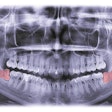
The antibiotic prescribing practices of dentists for odontogenic infections in children do not appear to be in line with recommended professional guidelines of the American Academy of Pediatric Dentistry (AAPD) and the ADA, according to a survey in the Journal of the American Dental Association (January 2012, Vol. 143:1, pp. 31-38).
Many medical and dental practitioners and professional associations have recognized the growing problem of antibiotic resistance and its relevance to dentistry. Professional guidelines developed by the AAPD and the ADA (JADA, April 2004, Vol. 135(4), pp. 484-487) attempt to address this issue, according to the study authors, from the University of North Carolina at Chapel Hill.
Other studies have examined physicians' antibiotic prescribing practices, but few have looked at dentists' practices, and no one has examined pediatric dentists' practices, they noted.
For this study, the researchers looked at North Carolina-based general and pediatric dentists prescribing antibiotics for odontogenic infections in children and found a low adherence to these professional guidelines. They surveyed clinicians attending continuing education courses and professional meetings who treated children 15 years and younger in their practices.
A total of 280 dentists attended one or more of the four meetings at which the data were collected, and a total of 154 dentists completed the surveys. The mean age of respondents was 47 years, and the mean number of years in practice was 19. Of the 154 dentists overall, 106 were general practitioners and 48 were pediatric dentists.
Clinical case scenarios
The survey consisted of five clinical case scenarios (three in-office, two weekend) that included antibiotic-prescribing decisions. Each case varied with regard to the clinical signs and symptoms. Clinical signs and symptoms included pain, fever, localized swelling, skin warmness, and facial swelling.
The survey asked dentists whether they would prescribe an antibiotic on the basis of the case information provided. The authors compared the responses for each clinical case scenario with the prescribing guidelines of the AAPD and the ADA.
The researchers considered dentists to be in adherence with the professional guidelines if they reported that they would prescribe antibiotics for the appropriate collective signs and symptoms.
Here are some of the survey findings:
- Across the three in-office clinical case scenarios, adherence to professional prescribing guidelines ranged from 10% to 42%.
- Dentists who reported practicing in rural areas were less likely to prescribe antibiotics in accordance with the clinical guidelines than were those practicing in urban or suburban areas.
- For the two weekend scenarios, overall adherence to the professional prescribing guidelines dropped to 14% and 17%.
- Although not significant, there was a trend toward pediatric dentists having higher levels of adherence to professional guidelines than did general dentists.
These results indicate a potential problem in how clinicians are using antibiotics to treat dental infections in children, according to the study authors. Although the findings might suggest that the study participants were unaware of, or unwilling to adhere to, professional guidelines, it is possible that the guidelines may lack clear direction for certain clinical situations, they added.
"The ADA guidelines do not include clinical scenarios to illustrate prescribing practices," the researchers wrote. "Although most clinical situations are specific to the patient, the guidelines might be more helpful if they contained representative clinical cases to illustrate recommended prescribing patterns."
And although the AAPD guidelines appear to be more specific, these also could be expanded or explained further, they recommended. Given the significance of this issue, both organizations could play a more active role in educating their members.
"There appears to be a lack of concordance between recommended professional guidelines and the antibiotic prescribing practices of dentists," the authors concluded. "Clearer and more specific professional guidelines may lead to improved adherence."



















